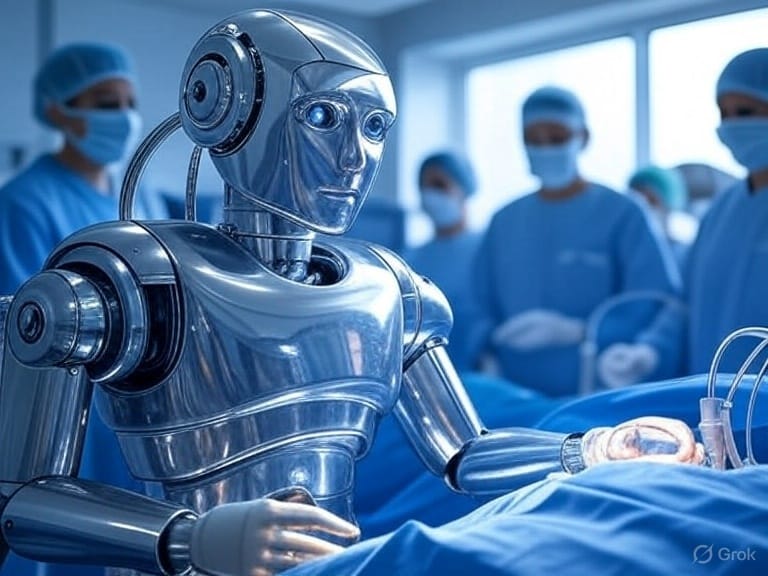- Shortlysts
- Posts
- Robot Performs Surgical Procedure Without Human Hands for First Time
Robot Performs Surgical Procedure Without Human Hands for First Time
Robot performs surgery without human hands on a lifelike patient for first time.

What Happened?
A robotic surgical device, trained only on videos of surgery, performed a portion of a gallbladder removal surgery on a lifelike patient without human hands for the first time according to Johns Hopkins University. In addition to completing the procedure, the robot listened and responded to commands from human surgeons.
‘This advancement moves us from robots that can execute specific surgical tasks to robots that truly understand surgical procedures,’ said medical roboticist Axel Krieger. The recent gallbladder surgery builds on earlier work in 2022, where Krieger's Smart Tissue Autonomous Robot, or STAR, performed the first laparoscopic procedure on a live pig.
Why it Matters
There are a number of potential advantages to teaching robots to perform surgical procedures. The first is greater precision and dexterity; robotic instruments can be steadier than human hands but are also capable of a range of movements beyond what a human can perform. Robotic instruments can reach smaller areas that human hands cannot access, allowing for more precise surgery on wounds in tighter places.
Robotic surgery can also use smaller incisions, which means less pain and a shortened recovery time for the patient. Surgical tools could be customized for a variety of different situations, allowing for less invasive surgery which could also reduce the amount of time it takes for the patient to recover from surgery. Much of the healing that follows surgery often comes from the need for the body to make repairs for damage done by the surgery itself.
I've just identified the single crypto that's positioned to explode from J.P. Morgan and BlackRock's massive blockchain initiative.
This isn't speculation—the world's largest financial institutions are actively moving real-world assets onto the blockchain RIGHT NOW.
When trillions in assets migrate to this specific protocol, early investors could see gains of 10X, 50X, or potentially even 150X+:
The window for early positioning is closing fast as institutional money floods in.
The ability of AI systems to learn and understand surgery from observation would also eliminate the need for lengthy or complex programming instructions. Instead of code which can only execute tasks within the framework of a series of written instructions, AI learning allows robotic surgical devices to respond to changing conditions in real time. Just like human surgeons do when they perform surgery and come across unexpected findings in a patient.
A report by the American Association of Medical Colleges predicted that the United States could face a shortage of 86,000 doctors by the year 2036, which would include a shortage of trained surgeons. If there aren’t enough human surgeons to meet the needs of the population in the next decade, robotic surgeons could fill that gap. Given the current state of the art in AI and robotics, we could reach autonomous surgery within the next decade.
How it Affects You
As the doctor shortage grows, the average age of the population will continue to rise, and older people tend to require more medical procedures of all kinds, including surgery. An aging population will likely exacerbate the doctor shortage, and robotic surgeons could solve at least part of that problem by replacing manpower with automation.